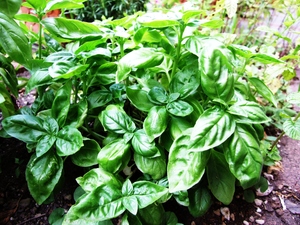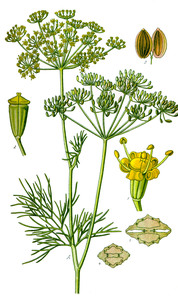Permaculture companion plants for Fennel
| Image | Name | Data | Description | Actions |
|---|---|---|---|---|

|
Basil |
5-10
Annual, Perennial
Full sun
Moist
Light (sandy), Medium
0.5
Herbs
true
Leaves, Seed
Seed - direct sow
https://en.wikipedia.org/wiki/Basil
Fast
Common basil, Thai basil, Tropical basil
Lamiaceae or labiatae
Basilikum
https://pfaf.org/User/Plant.aspx?LatinName=Ocimum basilicum
Start indoors from late february to mid-summer
Can be grown in containers
1.1
Andaman Is., Assam, Bangladesh, Bismarck Archipelago, Borneo, Cambodia, China South-Central, China Southeast, East Himalaya, India, Jawa, Laos, Lesser Sunda Is., Malaya, Maluku, Myanmar, Nepal, New Guinea, Nicobar Is., Philippines, Queensland, Sri Lanka, Sulawesi, Sumatera, Taiwan, Thailand, Vietnam, West Himalaya, Western Australia
Angola, Bahamas, Benin, Bolivia, Brazil Southeast, Bulgaria, Burkina, Burundi, Cameroon, Canary Is., Cape Provinces, Cape Verde, Caroline Is., Cayman Is., Central African Repu, Chad, Colombia, Comoros, Congo, Cook Is., Cuba, Dominican Republic, East Aegean Is., Ecuador, El Salvador, Eritrea, Ethiopia, Fiji, Gabon, Gambia, Ghana, Gilbert Is., Guatemala, Guinea, Guinea-Bissau, Gulf of Guinea Is., Haiti, Hawaii, Honduras, Illinois, Ivory Coast, Jamaica, Kazakhstan, Kenya, Laccadive Is., Leeward Is., Liberia, Line Is., Madagascar, Malawi, Maldives, Mali, Marianas, Marquesas, Marshall Is., Mexico Central, Mexico Gulf, Mexico Northeast, Mexico Northwest, Mexico Southeast, Mexico Southwest, Mongolia, Mozambique, Nauru, New Caledonia, New York, Nicaragua, Niger, Nigeria, Niue, Oman, Panamá, Primorye, Puerto Rico, Romania, Samoa, Senegal, Sierra Leone, Society Is., South Australia, South European Russi, Sudan, Tanzania, Tokelau-Manihiki, Tonga, Trinidad-Tobago, Tuamotu, Uganda, Ukraine, Venezuela, Venezuelan Antilles, Wallis-Futuna Is., Windward Is., Xinjiang, Zambia, Zaïre, Zimbabwe
After last frost date
15cm
https://powo.science.kew.org/taxon/urn:lsid:ipni.org:names:452874-1
Condiment, Drink, Tea
Essential Oil, Strewing, Fragrance
|
Basil (Ocimum basilicum) is a herb native to tropical regions of Asia and Africa. It is known for its fragrant, green leaves and small, white flowers. The leaves are typically oval-shaped and have a glossy texture. The stem is typically square-shaped and can grow up to 24 inches tall. Basil is a fast-growing plant that prefers full sun and well-drained soil. In colder climates, it is typically grown as an annual, as it is not winter hardy. To cultivate basil successfully, a grower should water it regularly and provide adequate drainage. Removing the last pair of leaves encourages branching and growth. Basil is often differentiated from other plants by its distinctive aroma, which is used in a wide variety of dishes, including pesto, soups, and salads. The leaves, flowers, and stems of the basil plant are all edible, and can be stored by drying or freezing. In addition to its culinary uses, basil has a number of other uses. It has been used medicinally as an anti-inflammatory and to improve digestion. It is also known to attract bees and other pollinators, making it valuable for gardens. |
Show
Edit |

|
Anethum graveolens |
2-11
Full sun
Moist
Light (sandy), Medium
0.8
Annual
Herbs
Medium
15cm x 30cm
Essential Oil, Pest control, Fragrance
true
Leaves, Seed
Condiment, Tea
Dill
Apiaceae or umbelliferae
Algeria, Chad, Cyprus, Gulf States, Iran, Lebanon-Syria, Libya, Morocco, Oman, Saudi Arabia, Tunisia
Afghanistan, Alabama, Albania, Alberta, Altay, Andaman Is., Angola, Argentina Northeast, Arizona, Arkansas, Assam, Austria, Azores, Bahamas, Baleares, Baltic States, Bangladesh, Belarus, Belgium, Brazil South, Brazil Southeast, British Columbia, Bulgaria, California, Cameroon, Canary Is., Cape Verde, Cayman Is., Central European Rus, China North-Central, China South-Central, China Southeast, Connecticut, Costa Rica, Cuba, Czechoslovakia, Delaware, Denmark, Dominican Republic, East Aegean Is., East European Russia, East Himalaya, Ecuador, Eritrea, Ethiopia, Finland, France, Ghana, Great Britain, Greece, Guatemala, Haiti, Hawaii, Hungary, Illinois, India, Indiana, Iowa, Iraq, Italy, Jamaica, Kansas, Kazakhstan, Kentucky, Kenya, Kriti, Krym, Laos, Leeward Is., Louisiana, Madeira, Maine, Manitoba, Maryland, Massachusetts, Michigan, Minnesota, Missouri, Mongolia, Montana, Mozambique, Nebraska, Nepal, Netherlands, New Jersey, New York, Nicobar Is., Niger, Nigeria, North Carolina, North Dakota, Northwest European R, Norway, Ohio, Oklahoma, Ontario, Oregon, Pakistan, Palestine, Pennsylvania, Peru, Portugal, Primorye, Puerto Rico, Québec, Rhode I., Romania, Saskatchewan, Sicilia, Somalia, South Dakota, South European Russi, Spain, Sudan, Sweden, Switzerland, Tadzhikistan, Tanzania, Texas, Thailand, Transcaucasus, Trinidad-Tobago, Turkey, Turkey-in-Europe, Ukraine, Uzbekistan, Vietnam, Virginia, Wake I., Washington, West Virginia, Windward Is., Wisconsin, Yugoslavia
https://en.wikipedia.org/wiki/Dill
https://pfaf.org/User/Plant.aspx?LatinName=Anethum graveolens
https://powo.science.kew.org/taxon/urn:lsid:ipni.org:names:837530-1
Dill
|
Dill (Anethum graveolens) is a plant native to the eastern Mediterranean region and West Asia. It is an annual herb that grows to a height of about 1-2 feet and has delicate, feathery leaves. The plant has small yellow flowers that bloom in the summer. Dill is a popular herb in many cuisines, especially in European and Middle Eastern dishes. It is used to flavor soups, stews, fish, and pickles. The leaves and seeds of dill are both edible and can be used fresh or dried. The seeds have a more pungent flavor than the leaves and are often used in pickling. Dill can be stored by drying or freezing the leaves and seeds. Dill prefers full sun and well-drained soil. It is easy to grow and can be started from seed or from transplants. Dill is not winter hardy and will die off in the winter. In addition to its culinary uses, dill has been used medicinally to aid in digestion and to reduce inflammation. It has also been used as a natural insect repellent. The plant is attractive to many types of beneficial insects, making it a valuable addition to any garden. |
Show
Edit |